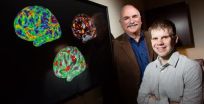(Press-News.org) Boston, MA – Primary care providers who engaged in an online game to solve clinical cases about hypertension management improved blood pressure control of their patients in a shorter amount of time compared to non-gamers, according to a new study by researchers at Brigham and Women's Hospital (BWH) and the Veterans Affairs Boston Healthcare System.
The study was published May 20, 2014 in Circulation: Cardiovascular Quality and Outcomes.
"This study is the first to show that an online educational game among medical professionals can improve the health measures of their patients," said Alexander Turchin, MD, MS, director of Informatics Research, BWH Division of Endocrinology, co-lead study author.
Leveraging spaced education, a learning concept in which students may significantly increase knowledge retention if information is presented and reinforced over spaced intervals of time, researchers found that primary care clinicians who participated in an online spaced-education game developed by B. Price Kerfoot, MD, EdM, staff surgeon, Veterans Affairs Boston Healthcare System, lead study author, improved their knowledge of managing high blood pressure and generated a modest but significant decrease in the time it took for their patients with high blood pressure to reach their blood pressure target.
A two-arm, randomized trial was conducted during the course of a little over a year among primary care clinicians at eight Veterans Affairs hospitals in the Northeast United States. Clinicians were randomized to either a group that received educational content about lowering blood pressure in the form of an online game vs. a group who received identical content via a static online posting. One hundred eleven clinicians enrolled in the study. Of those enrolled, 48 completed the trivia game while 47 completed the readings of the online posting.
Educational content consisted of 32 validated clinical cases followed by multiple-choice questions with explanations on hypertension management. Those in the online game group were e-mailed one question every three days. Questions were re-sent in 12 or 24 days if answered incorrectly or correctly, respectively. A question was retired when clinicians answered it correctly twice consecutively. The game would post clinician scores to foster competition.
Primary outcome measured was time to reach blood pressure target (less than 140/90 mm Hg). In multivariable analysis of 17,866 hypertensive periods among 14,336 patients, the researchers observed a modest decrease in the time to achieve target blood pressure values in patients treated by clinicians in the online game group.
Researchers found that patients of clinicians playing the game lowered their blood pressure to their target level in 142 days compared to 148 days for those whose clinicians read an online posting.
The number of clinicians who had to participate in the game to achieve target blood pressure in one more patient was 0.43 (i.e., for every four clinicians who participated in the game, approximately 10 more patients achieved target blood pressure).
According to the researchers, anyone can enroll in the spaced-education game for free at Qstream (http://qstream.com/vabpgame), a start-up company launched by Harvard to develop and disseminate the spaced-education methodology outside of its firewalls.
"Based on our findings, educational games may be effective tools to engage health professionals, boost learning, optimize practice patterns, and improve patient outcomes," said Turchin. "We hope that future studies continue to focus on figuring out how to most effectively integrate games into the education of health professionals for the benefit of their patients."
INFORMATION:
This research was supported by the Research Career Development Award Program and research grant from the Veterans Affairs Health Services Research and Development Service, the American Urologic Association Foundation, Astellas Pharma US Inc., Wyeth Inc., and the National Institutes of Health (K24 DK63214, R01 HL77234).
Brigham and Women's Hospital (BWH) is a 793-bed nonprofit teaching affiliate of Harvard Medical School and a founding member of Partners HealthCare. BWH has more than 3.5 million annual patient visits, is the largest birthing center in Massachusetts and employs nearly 15,000 people. The Brigham's medical preeminence dates back to 1832, and today that rich history in clinical care is coupled with its national leadership in patient care, quality improvement and patient safety initiatives, and its dedication to research, innovation, community engagement and educating and training the next generation of health care professionals. Through investigation and discovery conducted at its Brigham Research Institute (BRI), BWH is an international leader in basic, clinical and translational research on human diseases, more than 1,000 physician-investigators and renowned biomedical scientists and faculty supported by nearly $650 million in funding. For the last 25 years, BWH ranked second in research funding from the National Institutes of Health (NIH) among independent hospitals. BWH continually pushes the boundaries of medicine, including building on its legacy in transplantation by performing a partial face transplant in 2009 and the nation's first full face transplant in 2011. BWH is also home to major landmark epidemiologic population studies, including the Nurses' and Physicians' Health Studies and the Women's Health Initiative. For more information, resources and to follow us on social media, please visit BWH's online newsroom. END
Game changer: Patients of doctors who played online game had better control of blood pressure
2014-05-20
ELSE PRESS RELEASES FROM THIS DATE:
Screen of existing drugs finds compounds active against MERS coronavirus
2014-05-20
WHAT:
Clinicians treating patients suffering from Middle East respiratory syndrome (MERS) currently have no drugs specifically targeted to the MERS coronavirus (MERS-CoV), a virus first detected in humans in 2012 that has since caused 614 laboratory-confirmed infections, including 181 that were fatal, according to the World Health Organization. The case count escalated sharply in the spring of this year, and the first cases in the United States were announced in early May. To address the urgent need for therapies, researchers supported by the National Institutes of Health ...
Detroit Lions help rebuild city with innovative gridiron giving, U-M researchers say
2014-05-20
ANN ARBOR—The Detroit Lions' new model of philanthropy and community engagement may prove to be a touchdown for the city of Detroit.
A new case study of corporate social responsibility in sport by University of Michigan researchers uses the Lions as an exemplar of a professional sports team reinventing its charitable giving and community relations approach in hopes of making a bigger impact on the community.
In 2012, the Lions created the "Living in the City" campaign—a new model of corporate philanthropy that emphasizes deeper relationships with a small core group ...
UofL researcher and team explore broader definition of successful aging
2014-05-20
LOUISVILLE, Ky. – An aging population poses challenges for governments around the globe as nations grapple with how to satisfy the physical, social and economic needs of older adults. About 126 million adults 65 years and older live in China - the country with the largest population of senior citizens, while 40 million adults 65 years and older live in the United States.
In an article published today in Journal of Transcultural Nursing, University of Louisville School of Nursing assistant professor Valerie Lander McCarthy, PhD, RN; Ji Hong, MSN, a visiting scholar from ...
With climate changing, southern plants outperform northern
2014-05-20
Can plants and animals evolve to keep pace with climate change? A study published May 19 in the journal Proceedings of the National Academy of Sciences shows that for at least one widely-studied plant, the European climate is changing fast enough that strains from Southern Europe already grow better in the north than established local varieties.
Small and fast-growing, Arabidopsis thaliana is widely used as the "lab mouse" of plant biology. The plant grows in Europe from Spain to Scandinavia and because Arabidopsis is so well-studied, there is a reference collection of ...
The added value of local food hubs
2014-05-20
(Santa Barbara, Calif.) — As the largest purchaser of wholesale produce in Santa Barbara County, UC Santa Barbara's residential dining services provided the perfect avenue for a pilot project incorporating local pesticide-free or certified organic produce into an institutional setting.
The idea was conceived almost 10 years ago, when a group of students approached environmental studies professor David Cleveland about becoming a faculty adviser for student-led sustainable living classes. The group wanted to explore how to bring more local organic food in the dining halls. ...
Central Valley sees big drop in wintertime fog needed for fruit and nut crops
2014-05-20
BERKELEY — California's winter tule fog -- hated by drivers, but needed by fruit and nut trees -- has declined dramatically over the past three decades, raising a red flag for the state's multibillion dollar agricultural industry, according to researchers at the University of California, Berkeley.
Crops such as almonds, pistachios, cherries, apricots and peaches go through a necessary winter dormant period brought on and maintained by colder temperatures. Tule fog, a thick ground fog that descends upon the state's Central Valley between late fall and early spring, helps ...
New analysis eliminates a potential speed bump in quantum computing
2014-05-20
A quantum particle can search for an item in an unsorted "database" by
jumping from one item to another in superposition, and it does so
faster than a classical computer ever could.
This assertion assumes, however, that the particle can directly hop from any item to any other. Any restriction on which items the particle can directly hop to could slow down the search.
"Intuition says that a symmetric database allows the particle to hop freely enough to retain the quantum speedup, but our research has shown this intuition to be false," says Tom Wong, a physicist at ...
Penn team identifies promising new target for gum disease treatment
2014-05-20
Nearly half of all adults in the United States suffer from the gum disease periodontitis, and 8.5 percent have a severe form that can raise the risk of heart disease, diabetes, arthritis and pregnancy complications.
University of Pennsylvania researchers have been searching for ways to prevent, half and reverse periodontitis. In a report published in the Journal of Immunology, they describe a promising new target: a component of the immune system called complement. Treating monkeys with a complement inhibitor successfully prevented the inflammation and bone loss that ...
A full serving of protein at each meal needed for maximum muscle health
2014-05-20
Most Americans eat a diet that consists of little to no protein for breakfast, a bit of protein at lunch and an overabundance of protein at dinner. As long as they get their recommended dietary allowance of about 60 grams, it's all good, right?
Not according to new research from a team of scientists led by muscle metabolism expert Doug Paddon-Jones of the University of Texas Medical Branch at Galveston. This research shows that the typical cereal or carbohydrate-dominated breakfast, a sandwich or salad at lunch and overly large serving of meat/protein for dinner may not ...
Cognitive test can differentiate between Alzheimer's and normal aging
2014-05-20
CHAMPAIGN, Ill. — Researchers have developed a new cognitive test that can better determine whether memory impairments are due to very mild Alzheimer's disease or the normal aging process.
Their study appears in the journal Neuropsychologia.
The Alzheimer's Association estimates that the number of Americans living with Alzheimer's disease will increase from 5 million in 2014 to as many as 16 million by 2050. Memory impairments and other early symptoms of Alzheimer's are often difficult to differentiate from the effects of normal aging, making it hard for doctors to ...




